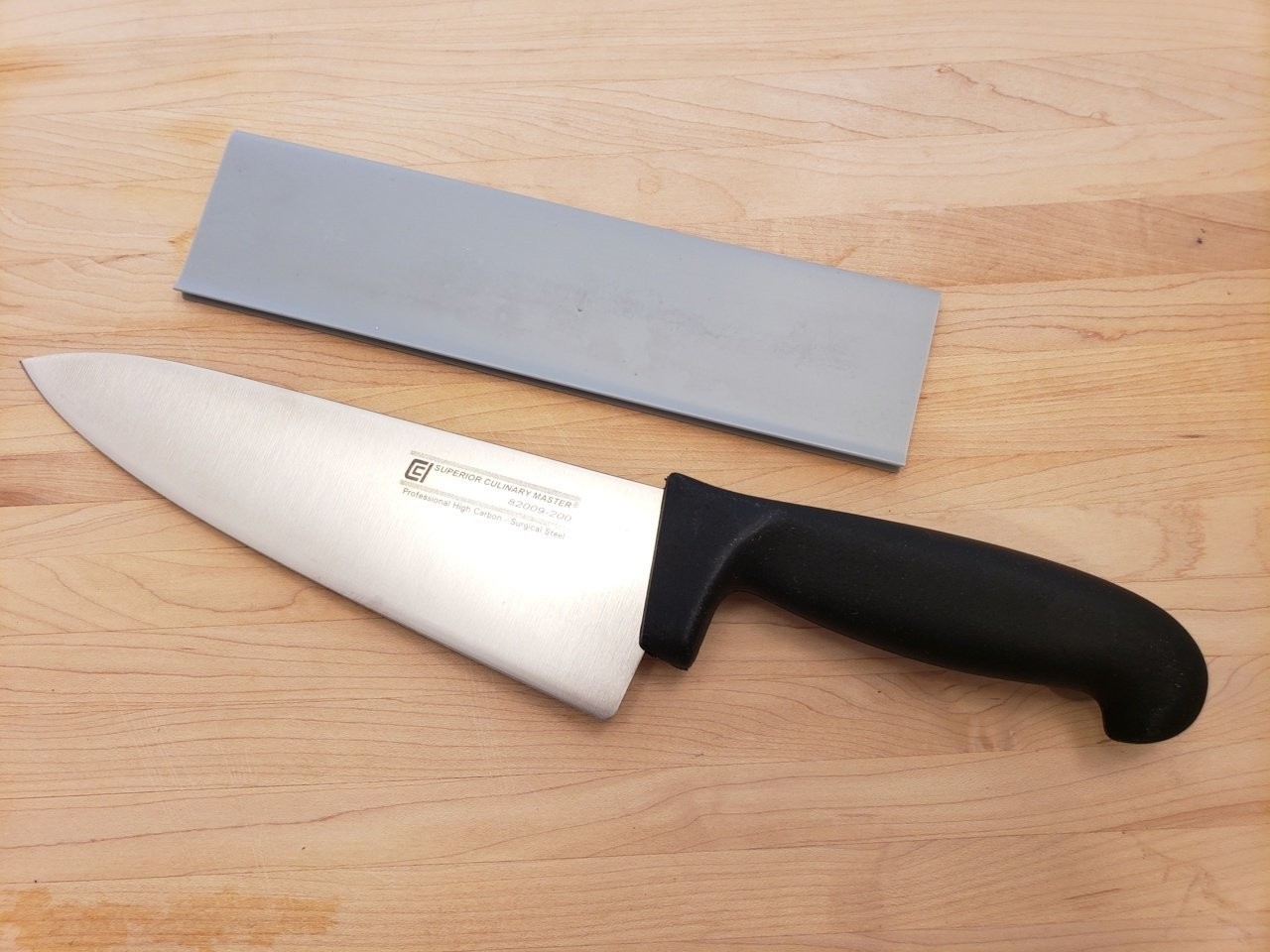8" Chef Knife with guard
Made from the finest Canadian steel, this knife is the knife of choice for our culinary students. Most students in the Commercial course use this knife. Under proper care it is designed to last. Comes with a knife guard.
THE QUALITY OF STEEL
Quality knives require a very specific grade of steel to insure proper forging, tempering and hardening.
CCI Superior Culinary Master knives are made of the finest quality, high carbon stainless to ensure the durability, strength and longevity of the blade, as well as resistance to rust and corrosion.
THE FORGING PROCESS
The way in which the knife is forged and tempered is as important as the quality of the steel used. Forging is the process of heating the steel to a red-hot stage then drop forged with a powerful blow to form the forged blank.
STRIP STEEL vs. FULLY FORGED?
Strip steel manufacturing is one of the most common methods of making knives. This simple and less costly method produces a knife that is punched from steel that is ordered and supplied to specifications. Strip steel knives in many instances are produced in ultra modern cutlery plants today using the latest in CNC grinding machines and robotics and require less human intervention in there production. By producing knives in this manner, there is more quality consistency and a substantial cost savings that can be passed on to the consumer.
Hardening and tempering can be more consistent with today’s modern methods. Therefore, Forged knives today once considered the best are more a personal preference in style.
MAKING A STAMPED OR FORGED KNIFE, THE PROCESS
THE STAMPED KNIFE
The blade or blank as it is known is cut from a sheet or strip steel of high carbon stainless steel. Rivet holes are punched into the tang or handle area of the knife. The blank is heated to red hot, and then hardened, tempered by re-heating and various other means such as ice tempering. Specialized techniques, like Ice tempering, creates a hardened blade that will help sustain its sharpness for prolonged periods and give the desired effect for easy re-sharpening. Blades are then put into grinding machines to give them the correct V type shape. Ground blades are then cleaned and dried ready for Trademarks and Logos. Handles are produced and assembled onto the blades. Then the final handle finishing and blade edges are placed onto the knives The final steps are quality inspection and packaging.
THE FORGED KNIFE
The primary stage blank is cut from strip steel of high carbon stainless steel. The blank is heated to a red-hot stage and drop forged, usually the 6-10 ton hammer will strike the steel about three times. A tool dye used for trimming excess hammered steel from the forged product creating the initial forged blank. Holes are drilled into the tang for the rivets. The forged blank is re-heated to red hot, and then hardened, tempered by re-heating and various other means such as ice tempering. Specialized techniques, like Ice tempering, creates a hardened blade that will help sustain its sharpness for prolonged periods and give the desired effect for easy re-sharpening. Blades are ground individually to refine the taper and produce the final form of the quillon/guard and bolster. The handle is attached and riveted with special compression rivets and the blade is ground to its final shape. Ground blades are then cleaned and dried ready for Trademarks and Logos.
